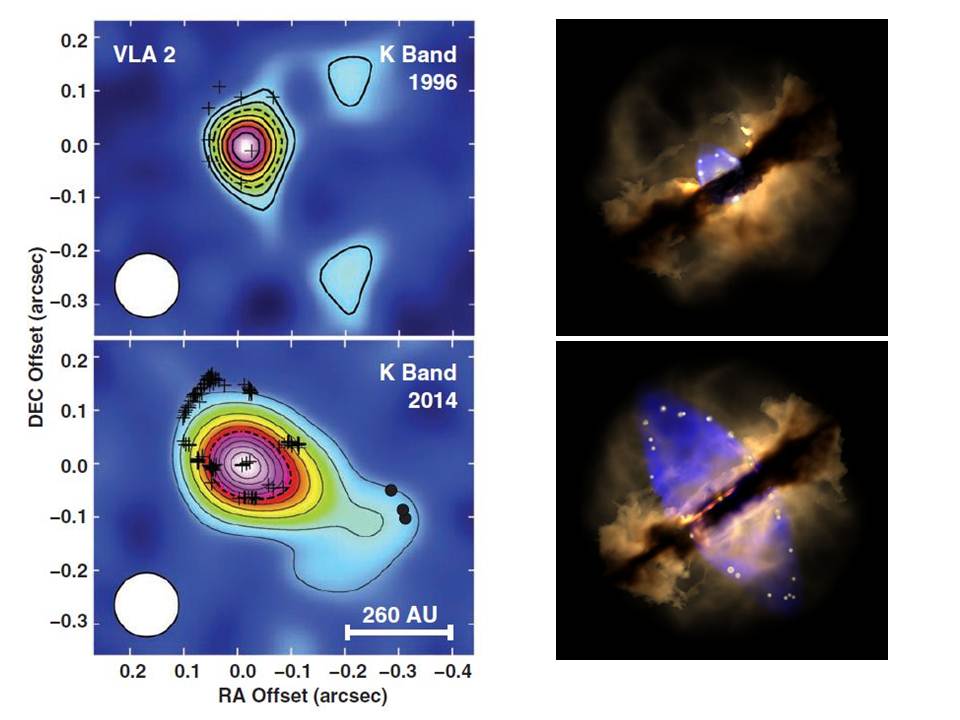Daily Image
03-04-2015Observing the onset of outflow collimation in a massive protostar
| Submitter: | Gabriele Surcis |
| Description: | The current paradigm of star formation through accretion disks, and magnetohydrodynamically driven gas ejections, predicts the development of collimated outflows, rather than expansion without any preferential direction. We have observed and reported in Science the evolution of the collimation of a radio jet emitted from the high-mass protostar W75N(B)-VLA2. A pair of radio images of the young star, made 18 years apart, has revealed a dramatic difference in morphology that is providing us with a unique, "real-time" look at how massive stars develop in the earliest stages of their formation. The first image obtained with the Very Large Array (VLA) in 1996 shows a compact source of a hot, ionised wind ejected from the young star (top left panel). The 2014 image, observed with the Jansky VLA, shows that ejected wind deformed into a distinctly elongated outflow (left bottom panel). Furthermore, the magnetic field around W75N(B)-VLA2 developed a preferred direction aligned with the large scale magnetic field in the region. Now we have observed that also the outflow is in the same direction, indicating that magnetic forces are important in the formation of this star. We think that the young star is forming in a dense, gaseous environment, and is surrounded by a doughnut-shaped, dusty torus. The star has episodes in which it ejects a hot, ionised wind for several years. According to a simple model, that wind can initially expand in all directions, forming a spherical shell around the star. Later, the wind hits the dusty torus, which slows it. Wind expanding outward along the poles of the torus, where there is less resistance, moves more quickly, resulting in an elongated shape for the outflow. Image caption: Left panels: Comparison of the K band continuum emission of VLA 2 in epoch 1996 (top) and 2014 (bottom). Image Credit: Science journal. Right panels: 3D hydrodynamic simulation and visualization (generated in the Shape software) of an episodic, short-lived, originally isotropic outflow ejection (top) from the massive protostar W75N(B)-VLA 2, whose morphology evolves into a collimated outflow (bottom) as it expands within a toroid of dust and gas. Image Credit: Wolfgang Steffen, Instituto de Astronomía, UNAM. |
| Copyright: | Science journal and Wolfgang Steffen (Instituto de Astronomía, UNAM) |
| Tweet |  |
